How to Get a Claw-Foot Tub for Your Bathroom
http://decor-ideas.org 11/07/2014 05:13 Decor Ideas
A claw-foot tub is a special place in which to soak, play and dream. More than just a tub, it may recall a romantic getaway or childhood bath time with Mr. Bubble. Restoring a vintage tub is recycling at its best and may not be as challenging as you think. We’ve compiled the pros and cons of restoring versus buying new and the important steps you need to know to refurbish a claw-foot tub.
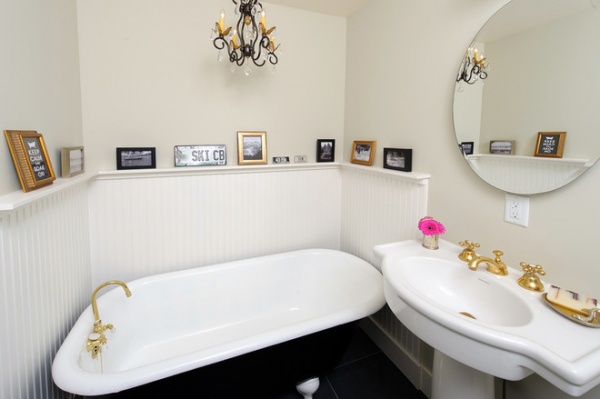
With sinuous curves and sculptural feet, both new and vintage claw-foot tubs look very similar. You may wonder: Besides their age, what’s the difference?
Vintage Claw-Foot Tubs
Vintage tubs, like this one, are made of cast iron and lined with an interior layer of baked-on porcelain. Cast iron retains heat very well, making these tubs perfect for a long soak. The problem that is many of them are nearly a hundred years old and look it.
The weight of cast iron — typically 200 to 400 pounds — is another downside. But the price of a vintage tub is usually easier on the wallet: about a few hundred dollars, depending on the size, style and condition.
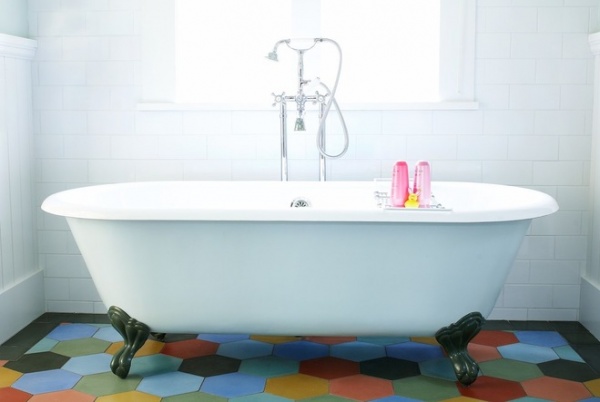
New Claw-Foot Tubs
New claw-foot tubs, like the one shown in this room by Alison Kandler Interior Design, have the same shape as their predecessors. New tubs are often made of acrylic or fiberglass. The benefit is that these materials are not as heavy as cast iron. However, these materials don’t hold in heat like the cast iron pieces. And acrylic, in particular, scratches more easily. Acrylic claw-foot tubs generally range from $1,200 to $2,000.
New cast iron claw-foot tubs are also available and can cost $1,200 to $5,000, though the average runs about $2,200.
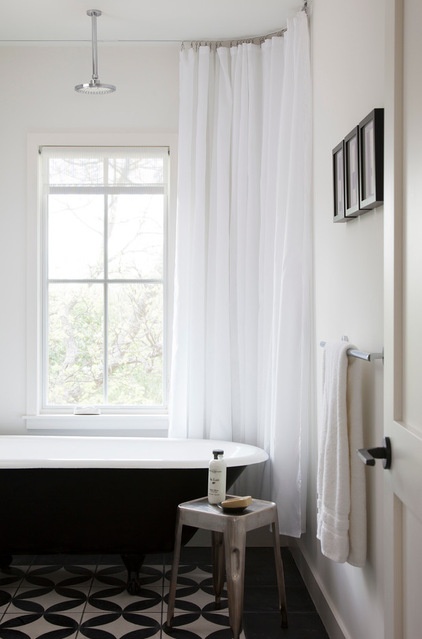
So, Refurbish or Buy New?
There’s certainly a feel-good factor in refurbishing a vintage tub. Recycling something rather than discarding it should make your heart sing. And if a tub is original to your house, it’s also a great piece of history to keep alive.
If you already own a claw-foot tub and it’s in place with all of the necessary plumbing hardware, it’s definitely less expensive to refurbish it than buy new.
But if you don’t yet own one, you’ll need to consider whether you have a way to get it home — or first to a workshop and then home. Unless you have a circle of strong buddies and access to a truck, you may need to hire someone for this. Hiring a plumber and buying accessories may be an additional expense depending on your situation, and applies whether the tub is new or vintage.
Sometimes a refurbished tub can cost as much as a new tub. That depends on the particulars of your home; transportation availability; the tub style, material and size; and plumbing accessories you choose.
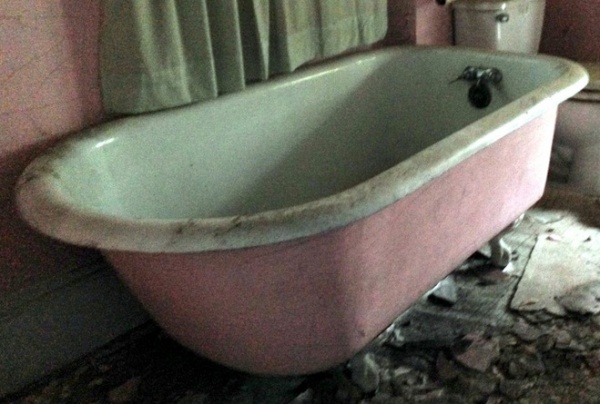
How to Bring a Vintage Tub Back to Life
1. Give it a simple deep-clean. If you want to purchase a vintage claw-foot tub, look for one that’s in very good shape in the first place. Are the legs intact? Is the body of the tub sound? Ideally look for one whose interior doesn’t need anything but a good cleaning. (The exterior, or outside, of the tub is a different story.) The original porcelain finish on the inside surface will be more durable than the finish produced by the reglazing method that will be reviewed later.
If the tub is in a salvage warehouse or similar location, expect that it’s going to be dirty from surface debris. A simple wipe-down with water should reveal whether its surface is trashed or in pretty good shape.
Once you’ve purchased the tub, clean it with a nonabrasive cleanser and sponge. Avoid scouring powders, anything acidic, like vinegar, and steel wool or scratchy pads. You can also pour warm water into a large bucket and add ¼ cup each of ammonia and baking soda to use as a cleanser. Baking soda is mildly abrasive, but when diluted, it’s OK for porcelain.
Don Hooper of Vintage Plumbing in Los Angeles says after his initial cleaning, he often buffs the porcelain surface using a power sander outfitted with a buffing pad, using 600-grit and then 1,000-grit wet-dry sandpaper.
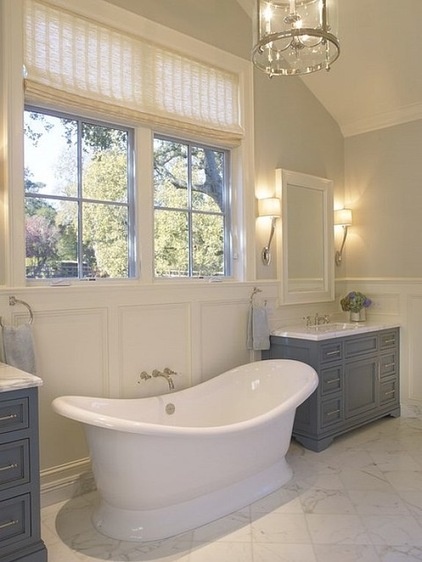
2. Reglaze the interior surface. If the interior surface has seen better days and a good cleaning isn’t enough, you’ll want to go the reglazing route. It’s becoming popular and has saved many claw-foot tubs from being discarded in the first place.
This method goes by many names, like “reglazing” “refinishing” and “acrylic coating,” but it’s basically the process of applying paint on top of the porcelain surface on the interior of the tub.
Reglazing entails masking off the area, roughing up the porcelain surface, filling nicks and holes, and applying a bonding agent, several layers of primer and then paint as finish coats. The tub here has been reglazed.
Miracle Method, the company that refinished the example here, and Perma-Glaze are two commercial giants in the tub refinishing industry.The process takes only one day and runs about $400 to $800.
While it is possible to refinish a tub yourself, don’t. It’s akin to painting your own car. The surface won’t be as smooth and won’t last as long as one done professionally. Some reglazing companies also use an acid etcher, which can be noxious.
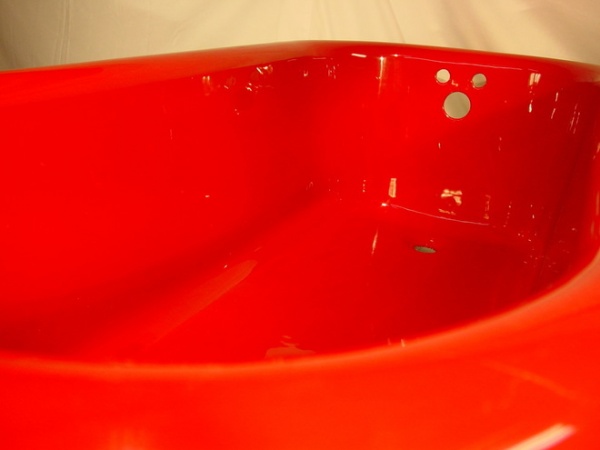
While white is the most popular color, other options are possible, like the red shown here, by Kevin Coffey of Kevin’s Custom Claw Foot Bath Tubs.
A reglazed surface will look new, but it won’t be as durable or long lasting as the original porcelain. Most companies warranty a refinishing job for five years. Some clients have complained that the surface starts peeling or chipping earlier, while others have had good results for 10 or 15 years. Obviously, the life expectancy will hinge on whether the tub is used often by multiple family members or for an occasional soak. And, as with any trade, some refinishers are better than others.
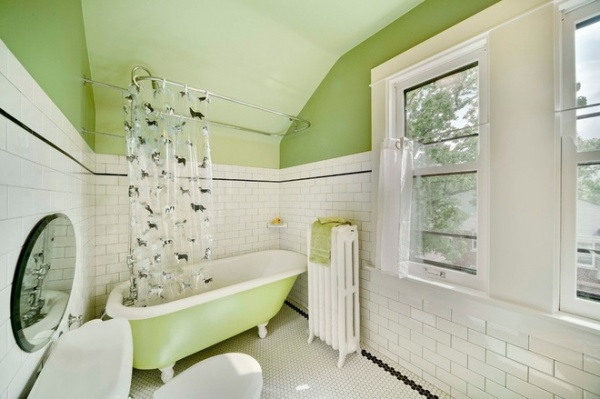
3. Finish the tub exterior. This is the fun part. Adding color or not is your choice, but I like a hue on a claw-foot tub’s exterior. Otherwise, it’s a lost opportunity, like having a convertible but never putting the top down.
See more on painted bathtubs
Before painting can begin, the surface needs to be prepped.
2 Surface-Prep Methods
Sandblasting option: If your tub’s exterior is in bad shape, meaning the existing paint is peeling or even rusty, have the exterior sandblasted. Sandblasting will take everything off the exterior (the interior will need to be masked off). Have the legs sandblasted as well if they’ve been painted.
Sandblasting will leave a bare surface. It will have to be primed immediately; otherwise it will begin to oxidize. Sandblasting costs around $125 to $250 and needs to be done offsite in a specialized workshop. Hauling the tub to and from the sandblasting location is another consideration.
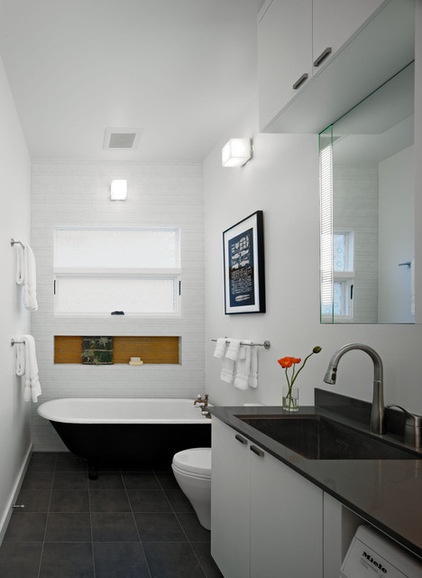
Scraping and sanding option: If your tub exterior just needs a facelift, this is something you can easily do on your own, especially if you know that the paint on the tub isn’t lead based. (An antique tub may have lead-based paint on the older layers. In this case it’s best to have it sandblasted by a professional.) If it’s a newer paint job and you’re going for a color change, use a stiff brush and sandpaper to rough up the surface. Be sure to wear a mask.
Christian Daur of ChrDauer Architects says the tub shown here had been painted over the years and his client took it upon herself to scrape, prep and paint with flat black enamel paint. “She is a very talented craftsperson, so there were very few visible brush marks,” he says.
Luckily, the original brass spout and faucet were in good shape and just needed new washers. “The entire job probably cost $50 in materials and a few days of time,” he says.
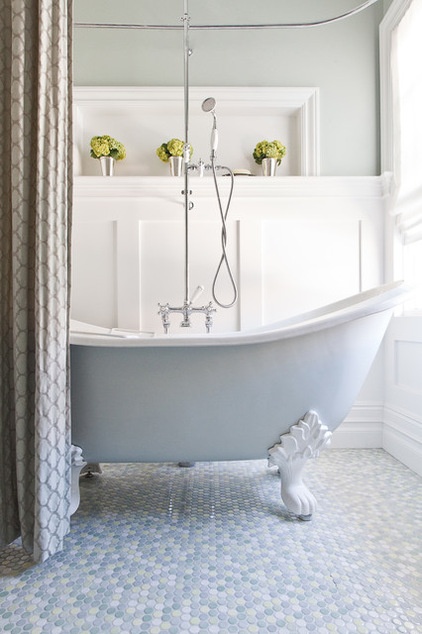
Exterior priming and painting. After the old paint has been removed, prime the entire exterior surface and legs, if they are to be painted, with a rust-bonding primer.
The paint should be a high-quality latex, because it’s more flexible and has “give” — important because the tub will expand and contract marginally as it heat up and cools down. Most tubs are painted in a semigloss or high-gloss finish, because it’s easy to clean. Paint can be applied by roller, brush or spray, depending on where it’s being applied and your level of skill with the various means.
Some folks have opted to have their tub professionally sprayed with epoxy paint, auto paint or a powder coating.
Both new and old tubs can be painted. Designer Kelly Scanlon says the new tub shown here is painted in a custom half tone of Tranquility by Benjamin Moore.
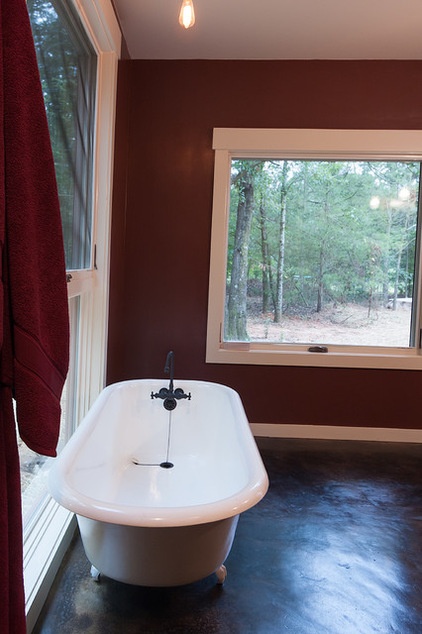
Where to Buy an Antique Claw-Foot Tub
Architectural salvage stores. Most cities, small and large, have stores that specialize in architectural salvage. Because claw-foot tubs are heavy, you don’t want to be driving leaps and bounds for a tub. Try to find one as close to home as possible.
Many architectural salvage companies will take pictures of items and email them to you for consideration before you make a trip; it doesn’t hurt to ask.
Online. Jeanne Kinsella of J.W. York Homes says their client found the tub shown here on Craigslist. Luckily for them it was already refurbished.
Tub refinishers. Some smaller tub refinishing companies also sell antique tubs.

Sources for Tub Parts, Plumbing Fixtures and Accessories
Houzz has supply lines, feet, drains, faucets, shower enclosure kits and more. Historic Houseparts and Strom Plumbing by Sign of the Crab are also good resources. And Creative Casting in Tacoma, Washington, will make new cast copies of existing tub feet out of silicone bronze for about $45 per foot. The company also has compiled a list of tub refinishers they’ve worked with.
More:
See a Soothing Backyard Bathhouse Born From a Salvaged Tub
Browse claw-foot bathtubs in the Shop Houzz section
Related Articles Recommended












